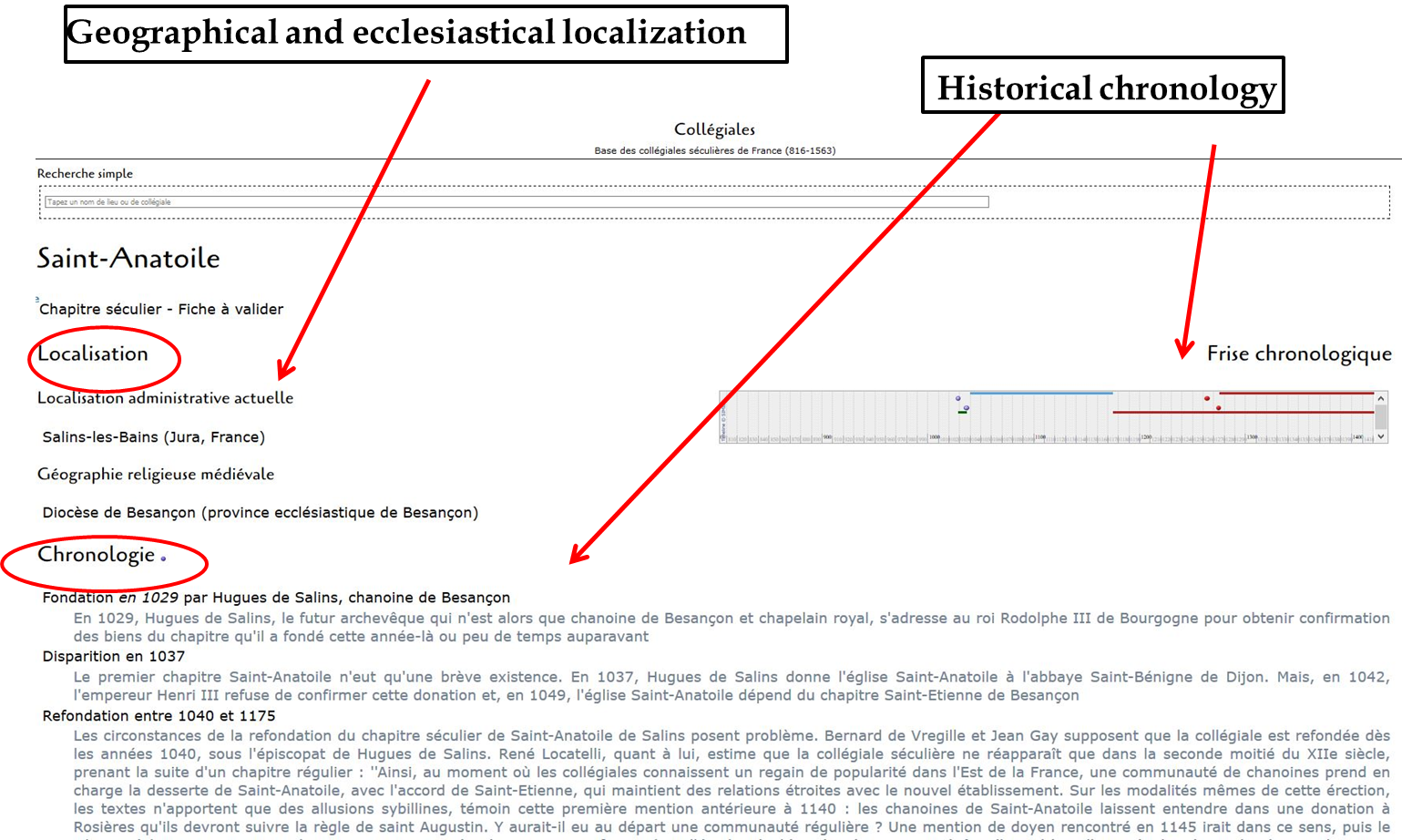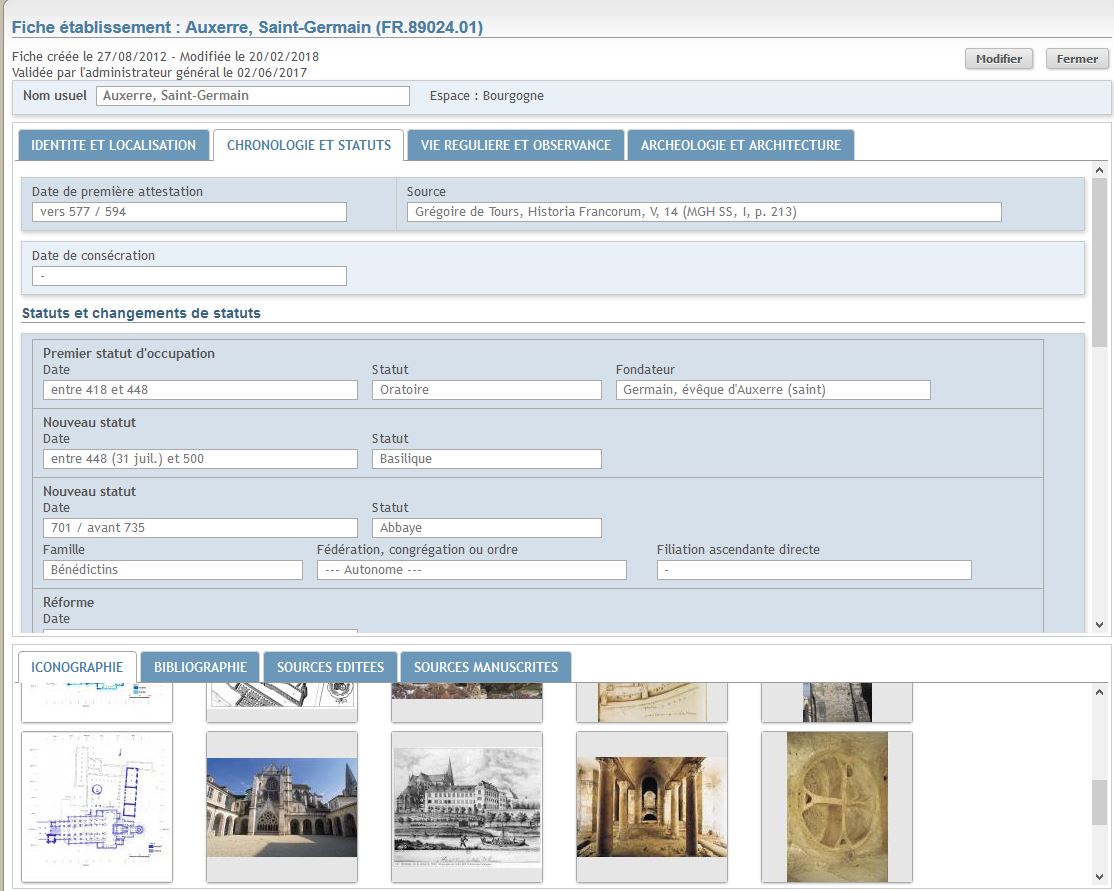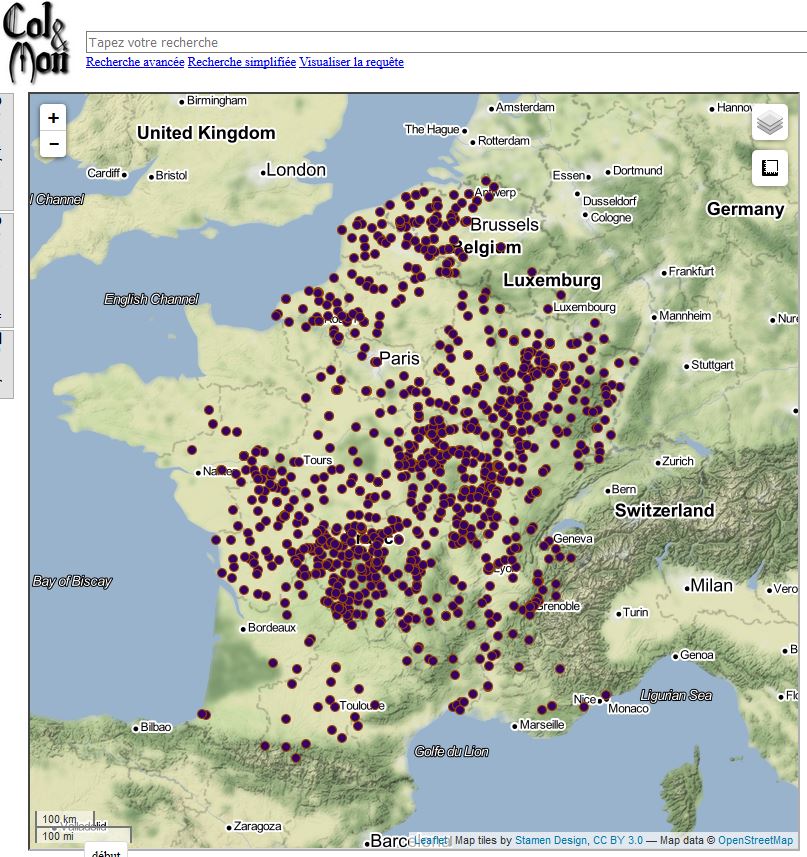The COLéMON project comes from a cross-disciplinary research team combining in a complementary manner four partnered laboratories which bring together medievalist historians, geographers, geomatics engineers and statisticians. Funded by the French National Research Agency (ANR), the team comprised ten permanents members and about a hundred co-workers. This thirty-six-month project began in 2016 and is led by Anne Massoni (University of Limoges) and Noëlle Deflou-Leca (University of Grenoble Alpes).
COLéMON focuses on the ecclesiastical structures that regroup a collective clergy. Due to their widespread presence in the Western hemisphere during the Middle Ages and because they represent two of the main forms of religious life at that time, these structures are the main constituents of the ecclesiastical network during that period. Indeed, regular institutions, such as monasteries, and secular establishments, such as collegiate churches, are traditionally considered foreign from one another, the former being with a regular clergy and the latter being a secular clergy. Therefore, unifying collegiate churches and monasteries within a single project is an entirely new approach in French historiography. It has come as the result of the true convergence of two issues that, although institutionally separate, present many similarities. This also explains why the structures are frequently confused: they sometimes have identical founders (laymen and clergymen), both have a system of life rules, they share an interest in charitable and academic functions, they both give liturgy a central role, and they have a similar spatial organization. This has often led churches to change their status (from collegiate to monastery or vice-versa), particularly in the context of reforms in the eleventh and twelfth centuries.

The project is born from the gathering of two research networks in the ecclesiastical history that, aside from being a part of COLéMON, still follow their own research purposes. The first one, already online, focuses on collegiate churches (Collégiales database) and the other on the monasteries (Monastères project), in order to understand the logic of their establishment and the evolution of their networks. COLéMON introduces a comparative study on those two types of institutions, that shared similar functions during the Middle Ages. The project's main objective is to understand the logic behind the implantation of these networks of institutions in France.
The architecture of those two separately-produced databases includes many similarities and integrates knowledge from the following disciplines: history, geography, architectural history, art history, legal and institutional history, archeology and geographical systems. By taking advantage of the interactions among these disciplines, each benefiting from its own cognitive processes and methodologies, the project aims to provide new knowledge of the medieval religious communities from a cartographical standpoint. The challenge is to fill in a methodological gap in French ecclesiastical geography in order to fulfill the expectations of religious history specialists as well as a larger public of scholars and patrimony associations.

The Data
Even if all of the French space is not yet covered, as you can see on the map, the database is currently made of 1897 notices which are currently being drafted. For the last two years, we especially focused on three main spaces: Burgundy, Limoges’s diocese and Poitou Charente.

For each institution of the French medieval space, we produce a review with the main historical evolutions; from the certificate of a first site occupation to its disappearance (such as foundations, reforms, affiliation, secularization…), the elements on the adherence (such as rules, customaries…), the architectural and archeological characteristics, but also some iconographic, bibliographic and heuristic data.
All notices are made in the same way, with 7 main parts:
• Geographical and ecclesiastical localization.
• Institutional and historical evolutions shown through a timeline (regular, secular).
• Orders, monastic families and regular life (rules, customs, pilgrimages…).
• Links between canonical or monastic institutes (as monastic networks, associations for praying, school networks).
• People (canons, monks or layman).
• Archaeology and architecture (with a short description of each known parts of the site).
• Bibliography, printed sources and manuscript sources.
The Goals
One of the main challenges of COLéMON in terms of geographical systems will be to solve the problem of how to interpret semantic data in combined thematic/geographical/chronological analysis and representation, considering the fact that the study covers nearly eight centuries and that the cartographical processing of cross-referenced geographically and chronologically complex data has yet to be resolved.
The project is made of four complementary parts meant to be undertaken by the partners, depending on schedules and specific tasks:
1 - Development of source databases, always accessible on their original site, with free software and rights (MySQL). It is based on the prioritization of areas and the realization of the computer protocol to connect the databases with interoperability.
2 - Implementation of mapping tools with the reconstitution of diocesan boundaries prior to 1317 and the integration of external data within the GIS.
3 - Configuration of web mapping tools with possibilities to generate personalized maps by the cross-referencing of several parameters using fixed criteria (as orography, hydrography…) and mobile criteria (as chronology, diocesan space, ecclesiastical provinces, regular families, types of structures, sources etc.). Both are meant to represent the factors explaining the implantation and the evolution of those structures through time.
4 - Configuration of analysis and modeling of time-space data:
- Time evolution for a special space: through a timeline and several maps, we will see, depending on the chosen criteria, a chronological evolution.
- It will be for instance possible to ask for density maps or networks graphs about all sites, which are in the same monastic order. Relationship diagrams between various structures will be made possible based on either strictly institutional criteria (congregation, hospital network...) or criteria pertaining more to their spiritual history (prayer association, worship of identical saints...).
Those tools are currently being tested, and our work is in progress. First COLéMON data and tools will most likely be online by the end of 2018.
You can follow our project on Twitter (@colemon_anr).
Noëlle Deflou-Leca

